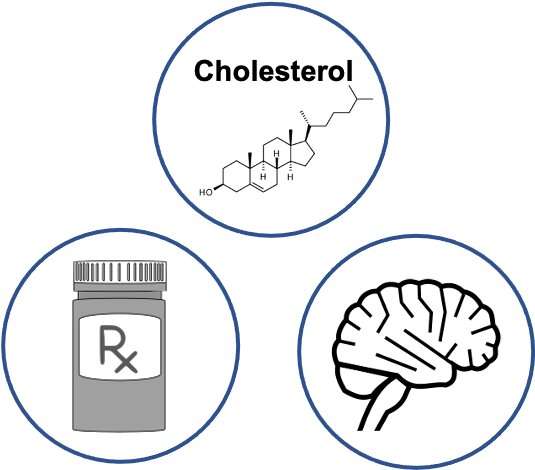
The blood-brain barrier is impermeable to cholesterol, yet high blood cholesterol is associated with increased risk of Alzheimer’s disease and vascular dementia. However, the underlying mechanisms mediating this relationship are poorly understood. A study published in the open-access journal PLOS Medicine by Vijay Varma and colleagues at the National Institute on Aging, part of the National Institutes of Health, in Baltimore, Maryland, suggests that disturbances in the conversion of cholesterol to bile acids (called cholesterol catabolism) may play a role in the development of dementia.
Little is known about how high blood cholesterol may lead to an increased risk of Alzheimer’s and dementia, yet understanding the underlying processes may lay the foundation for discovering effective therapeutics. To investigate whether abnormalities in cholesterol catabolism through its conversion to bile acids is associated with development of dementia, researchers drew on more than 1800 participants from two prospective studies: the Baltimore Longitudinal Study of Aging (BLSA) and the Alzheimer’s Disease Neuroimaging Initiative (ADNI).
First, the research team investigated whether cholesterol catabolism was associated with brain abnormalities typical of Alzheimer’s and vascular dementia. They next tested whether exposure to cholesterol medications that block bile acid absorption into the bloodstream was associated with an increased risk of dementia among more than 26,000 patients from general practice clinics in the United Kingdom. Finally, they examined 29 autopsy samples from the BLSA to determine whether people with Alzheimer’s disease tend to have altered levels of bile acids in their brains.
The authors found that the risk of vascular dementia increased for males, but not females, with greater number of prescriptions of bile acid blocking drugs. Their findings suggest that cholesterol catabolism and bile acid synthesis may impact dementia progression through sex-specific effects on brain signaling pathways. However, additional studies are needed as the research was limited by the relatively small numbers of autopsy samples. In addition, experimental studies are required to better understand the role of cholesterol breakdown in dementia.
“To further extend these findings, we are now testing whether approved drugs for other diseases that may correct bile acid signaling abnormalities in the brain could be novel treatments for Alzheimer’s disease and related dementias,” said senior author Madhav Thambisetty, M.D., Ph.D., investigator and chief of the Unit of Clinical and Translational Neuroscience in the NIA’s Laboratory of Behavioral Neuroscience. “These analyses are being pursued in the Drug Repurposing for Effective Alzheimer’s Medicines (DREAM) study.”
Public Library of Science

